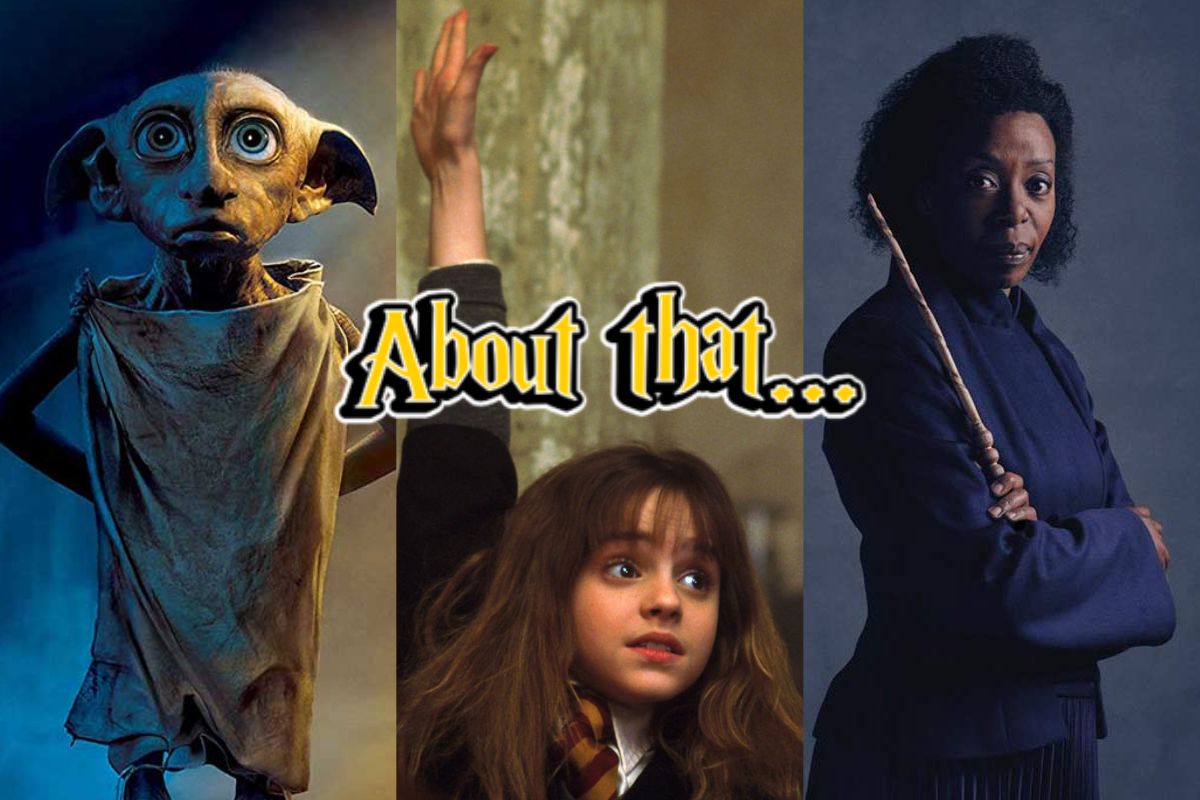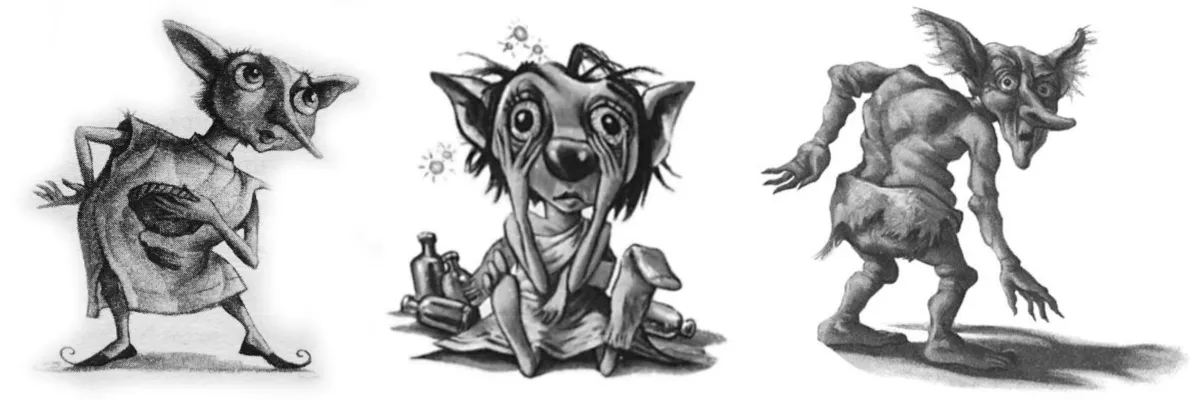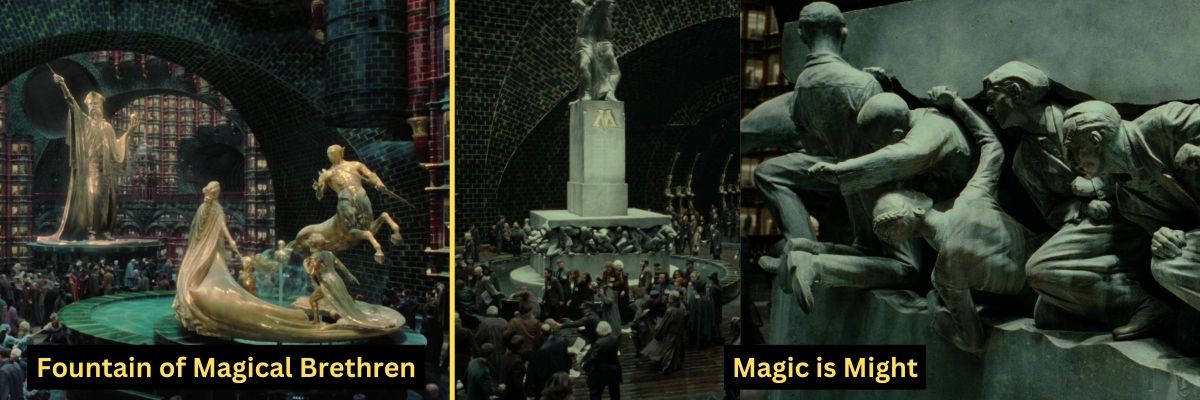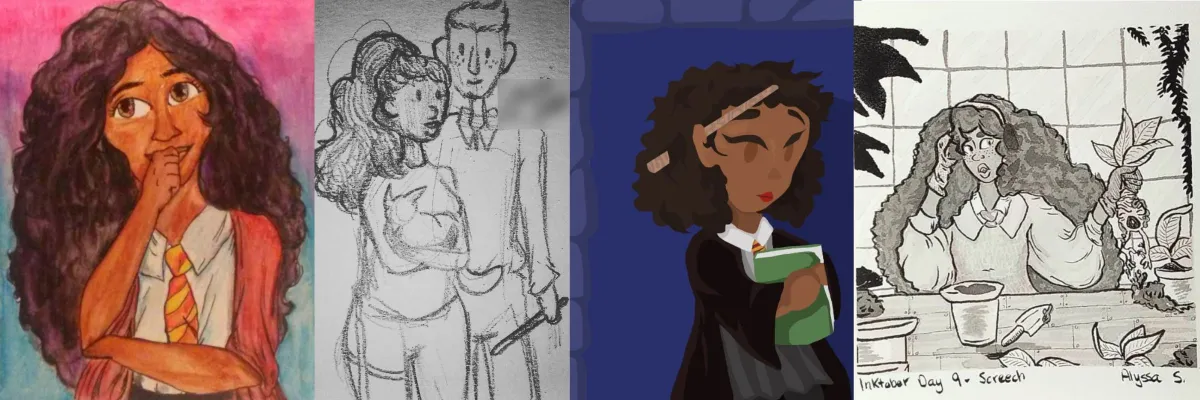The Troubling Implications of a ‘Faithful’ Yet Inclusive Harry Potter Adaptation
Once a dream, now a nightmare.

As I’m writing this, there’s an active genocide happening to transgender people (among other groups facing ongoing erasure). I want to start with this because that’s the main issue with Warner Bros. Discovery, and others, continuing their relationship with J.K. Rowling, one of the most high-profile transphobes in the world—a transphobe pouring their excessive royalties into organizations lobbying for the extermination of trans people.
Even if you could ignore all of that, there are still major red flags with the announcement of the Harry Potter TV reboot’s commitment to a “faithful adaptation” that didn’t just spring up out of nowhere after Rowling’s transphobia came out.
**Content warning: discussion of sexual assault.**
For over five years, The Mary Sue writers, among others, have talked about several issues within Harry Potter that yielded a “yikes” with the slightest bit of reflection. However, the number one topic of discussion among those critical of a Harry Potter reboot is the handling of race. (Other than “Why a Harry Potter reboot over stories people have wanted for years, like the Marauders?”) Regardless of the race of her actress, Hermione has been the racialized character most discussed since the reboot announcement.
As the gateway for Harry to learn about wizarding (white) supremacy, Hermione is the marginalized person. Through her, we learn wizards have their own community slurs and blood hierarchy (something anti-vaxxers have astoundingly appropriated.) Yes, there are overt, canon characters of color in the series. However, Hermione’s reception in the wizarding world as a Muggle-born is the primary tool for J.K. Rowling’s weak allegory on prejudice. As the most marginalized, book Hermione is understandably most upset when she learns about slavery in the wizarding world.
Yeah, we need to talk about the house elves—especially if this series follows the path of Harry Potter and the Cursed Child and casts a Black actress to play Hermione. While that was once something many fans enjoyed, the longer we’ve had to think about the implications for the rest of the story, the more unsettling it’s gotten.
S.P.E.W.
Other than being “the brightest witch of her age,” Hermione is best known, in the books, for her dedication to the abolition of slavery. After learning about Winky’s (an important elf omitted from the films) servitude, she searches the library for information. Upon discovering Hogwarts runs on the enslavement of these beings, the abolition of this slave caste becomes a significant goal for her onwards. Hermione begins the Society for the Promotion of Elfish Welfare (S.P.E.W.). Hermione’s commitment to ending slavery throughout the books isn’t an issue in itself. It’s the reaction from everyone else and the characterization of the house elves themselves where things go south.
Nearly everyone mocks Hermione for caring. Her methods of activism are messy, but she’s also a lone teenager. The rebuke is not just from fellow humans. Nearly all house elves resent Hermione’s views. Rowling writes all but Dobby as happy in their status as slaves. Kreacher wants to stay in the house of his master and serve the “worthy” members of the Black family. Winky was so upset with her freedom that it drove her to drink.

Everyone gets upset when Hermione’s activism goes from advocacy to action (as she attempts to free the elves that clean the Gryffindor dormitory). If Harry Potter were a product of the 2010s, her classmates would call her an “SJW.” The house elves stop coming to clean the rooms, and her classmates blame her. The only other person who works to end slavery is a non-canonical Slytherin, Liz Tuttle. Neville, Ron, and Harry technically join S.P.E.W., but just to keep Hermione off their backs. While Dumbledore does employ and house two free house elves (Dobby and Winky), it doesn’t erase the hundreds of enslaved elves under his watch for 40 years. (It’s too Benevolent Slavemaster revisionism for me.)
Transatlantic parallels
This isn’t a loose analogy I’m projecting. “Slave” appears 11 times in The Goblet of Fire (S.P.E.W.’s introduction) alone. Through characters like Ron, Rowling employs common contemporary and historical excuses for slavery to defend this hierarchy. He and others insist that elves are housed, fed, and (mostly) treated well—part of the family. Despite being inheritable like objects (Harry inherits Kreacher), house elves are part of the families they serve.
“Hermione — open your ears,” said Ron loudly. “They. Like. It. They like being enslaved!”
House elves are supposedly predisposed to cater to those given full humanity and autonomy, even if it means hurting themselves like Dobby did when he first came to warn Harry about the Chamber of Secrets. Their commitment to their masters is theorized as to why they speak in third person. They have no sense of self. House elves do not (appear to) even have elfish families or any semblance of culture, unlike other similar beings.
Hermione even lambasts historical revisionism and the downplaying of slavery in her favorite book. (Unfortunately, this is as topical as it was when the book was published 23 years ago.)
“It’s all in Hogwarts, A History. Though, of course, that book’s not entirely reliable. A Revised History of Hogwarts would be a more accurate title. Or A Highly Biased and Selective History of Hogwarts, Which Glosses Over the Nastier Aspects of the School.”
[…]
“Not once, in over a thousand pages, does Hogwarts, A History mention that we are all colluding in the oppression of a hundred slaves!”
Page 238 of Harry Potter and the Goblet of Fire
Harry and Hermione feel uncomfortable with overt expressions of social hierarchy between wizards, muggles, and magical beings—especailly after Voldemort returns. However, both stop short of actual change beyond the hunting of non-pureblood wizards. The status quo returns following the defeat of Voldemort. (The statue thematically resembling the Theodore Roosevelt Equestrian Statue presumably returns.)

They’re shorter and mouse-like, but we know they are “human enough” not to be considered animals. For one, house elves do not have an entry in the 2001 companion book Fantastic Beasts and Where to Find Them. That’s unlike werewolves, centaurs, and merpeople—all but one were beings hired on as teachers in two novels (and one movie). The only mention of house elves in FBWFT is in the “about the author” section. Here, FBWFT notes Newt Scamander worked in the Office for House-Elf Relocation for two years.
Additionally, Fantastic Beasts: The Crimes of Grindelwald (canon, unfortunately) introduces half-human, half-house elf Irma Dugard. The existence of Dugard (the child of a Lestrange and an enslaved house-elf) means a high probability of rape. Forced to obey, house elves cannot consent. This was a common (and economically incentivized) occurrence in chattel slavery. While not overtly said, rape happens (Voldemort’s conception) or is implied across the latter Harry Potter books.
A common defense of Rowling making slavery palatable is that people think she’s referring to real-world folklore creatures called brownies. Known by various names across the British Isles, these elfish/goblin-like creatures work gleefully for humans in the middle of the night and wear rags. However, house elves, unlike brownies, are known to those who live in their houses and have no autonomy. Rowling could’ve begun the construction of these creations as brownies, but drew from her own poor understanding of class and race to expand upon them.
Other uncomfortable (and looser) parallels include the illegality of house elves (and goblins) wielding wands and real-world slave codes. It’s not terrible that Rowling drew from history. However, what is terrible is that she constructed another layer of oppression that readers were supposed to not care enough about to resent all but one character for just shrugging off slavery. And she made the only person who was treated like a minority—in an otherwise racially-progressive society untouched by real-world bigotry—a joke for caring.
Note: Off-page, Rowling has confirmed that after The Battle of Hogwarts, Hermione works on elvish welfare. However, the details are so vague that we’re led to assume that nothing comes from it—maybe some new policies, but the institution is still intact.
Beyond a Black Hermione (or a Desi Harry)
A connected major concern following this announcement is how Warner Bros. Discovery will cast the show. The current expectations of casting in a project like this will be used to downplay accusations of bigotry. After all, reports came out saying that Hogwarts Legacy introduced a transgender character for the same similar purpose. More relevant, Rowling has done this in the past. After the books were completed, she treated (or cursed) fans to bizarre “facts” she insisted were planned or intended all along. Since at least 2007, Rowling has retconned and revised without admitting mistakes to the point that it’s become a joke. Because she’s retroactively added racial and sexual diversity before (with great harm, as in the case of Nagini in the Fantastic Beasts movies), it’s expected that she’ll do it again as an executive producer.
Of all the major characters most likely to be race swapped, the major dishonor (in this case) goes to none other than Hermione Granger. Following the casting announcement of Noma Dumezweni as Hermione Harry Potter and the Cursed Child—a play set years in the future that some fans don’t even accept as canon due to controversial story elements—it felt like there was a surge in fan art imagining Hermione as Black and brown. Starved for representation, it’s effortless to see yourself as Hermione. Between her disruptions and how she was marginalized as a Muggle-born, the vision is there.
Before this announcement and stamp of approval from Rowling, Black readers who connected with Hermione generally did one of two things. We either saw Hermione as white but connected on our similarities (because what else are you going to do as a child when most three-dimensional characters are white?) or always saw her as Black, so the news was an affirmation of their truth. I fell in the first group but couldn’t let go of the idea of anything but Black Hermione after the 2015 casting news—with a carve-out for Emma Watson. I let my imagination run wild.

It wasn’t til the end of 2019 that I started to see the cracks in stories, and this was only because I saw J.K. Rowling unveil bigoted views. Clear-headed, I saw the issues with the scraps I took from Rowling. In seeking out answers to why Rowling was expressing overt transphobia, I was exposed to more than the handful of issues presented in the text. Now, with everything we know about Hermione, a Black actress cast in a show seeking to be more faithful to the character and story depicted in the books would be totally inappropriate. A “color-blind” fantasy where the Black lead is called wizard-specific slurs and made fun of for caring about slavery? No fucking thanks.
Additionally, implementing a Black Hermione at this point would actively harm whoever is chosen as the young actress to play her, who would already face inevitable racism. (The same that could possibly befall another young cast member, because Harry Potter fans often have race-bent Harry as half South Asian.) It’s extra sickening that we can realistically imagine a casting choice like this considering the overlapping oppression of anti-Blackness and transphobia. They’re of the same root.
Be a Neville (pre-Deathly Hallows)
This is all without delving into the issues with Rowling’s depictions of genocide, antisemitism, and more. This is just one main character and her relationship with one group. Rowling’s role as a producer and writer in the failed Fantastic Beast series shows that things have only worsened.
One of the best and most concise explorations of how Rowling fails to understand marginalization and oppression (racially and otherwise) comes from former TMS writer Princess Weekes. Returning readers know she always provided nuanced and important discussions of Harry Potter. This was even before Rowling revealed herself to be bigoted towards trans people, contrary to those who think no one had any issues with the franchise before Rowling’s descent into transphobia.
(featured image: Warner Bros. Discover, Brontë, remixed by Alyssa Shotwell)
Have a tip we should know? tips@themarysue.com
